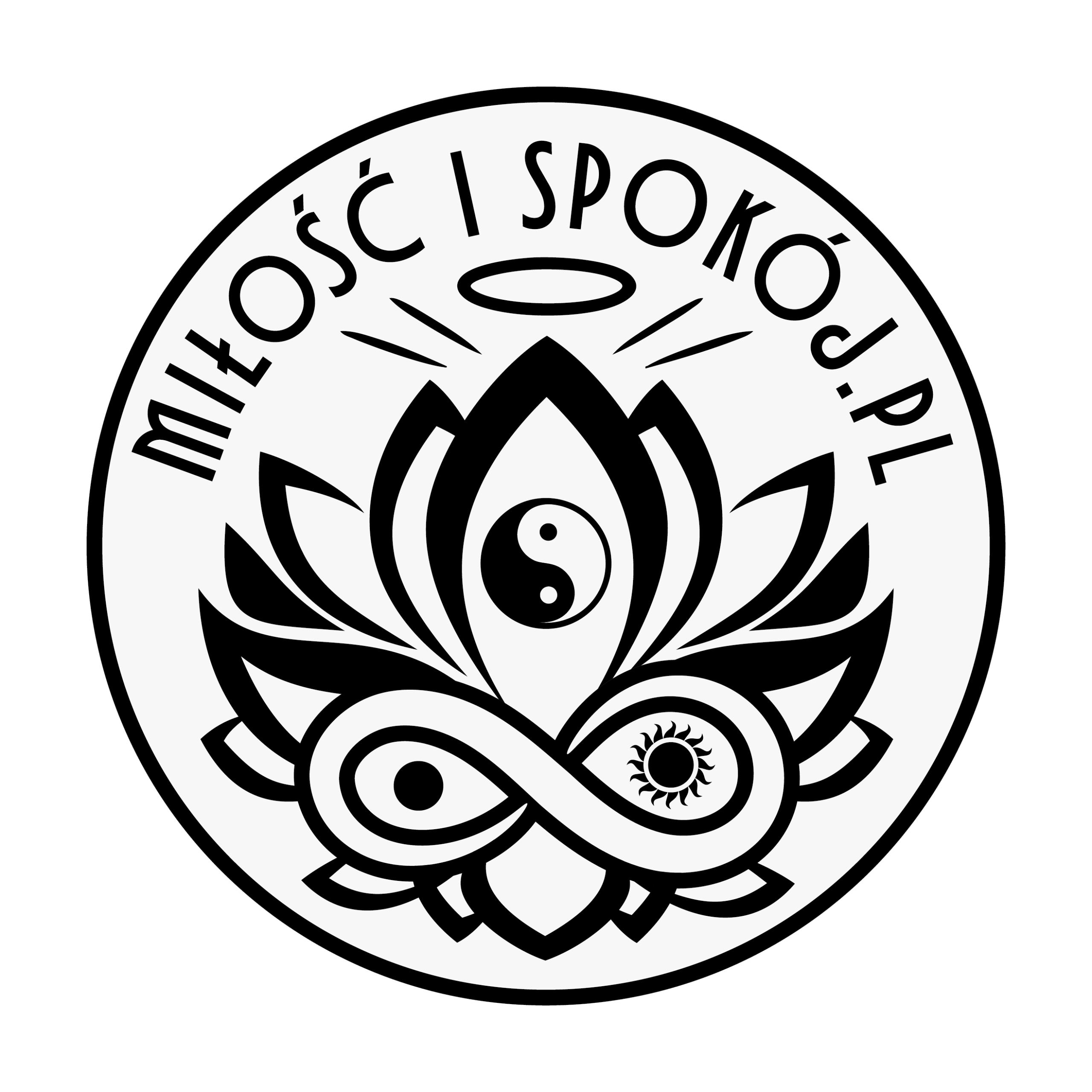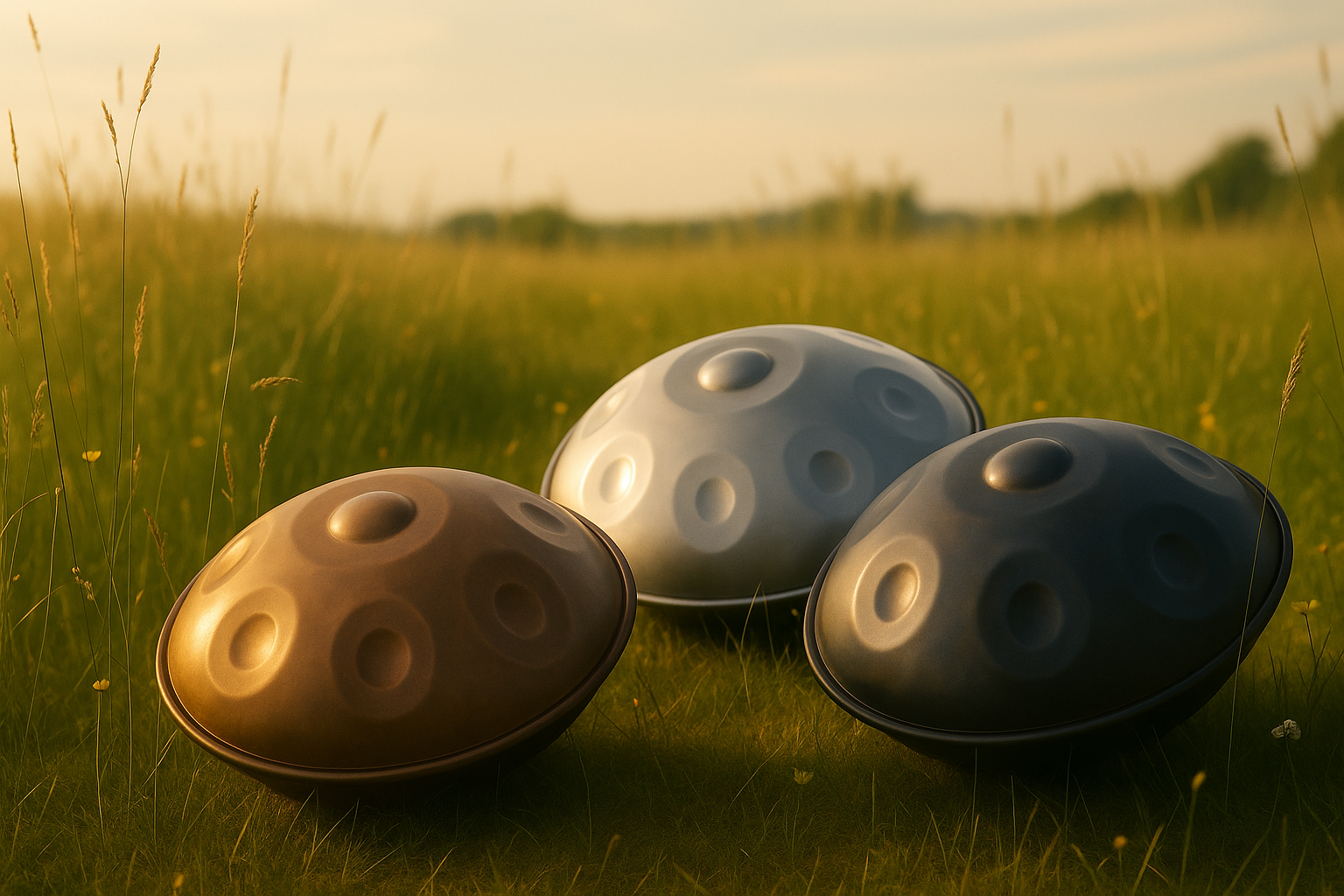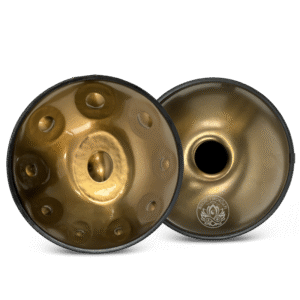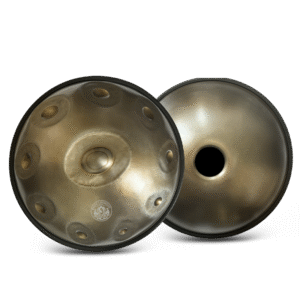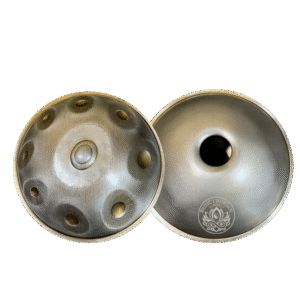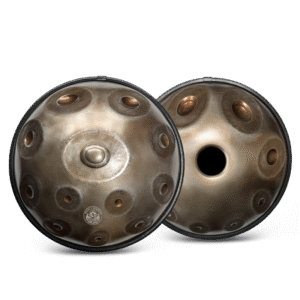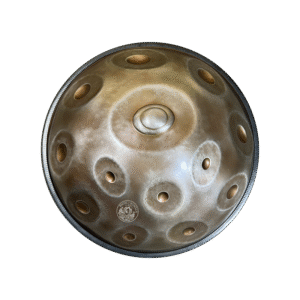Choosing the right material for a handpan is a key moment for any musician-it affects not only the sound, but also the durability of the instrument. The most popular options are Ember Steel, stainless Steel, and nitrided steel. Which one is the best? Here is a detailed comparison.
1. Handpan with Ember Steel-the best for the demanding
Ember Steel today it is the most popular and modern material for making handpans. This is not a completely new brand of steel, but a specially treated stainless steel with exceptional properties
Handpan z Ember Steel - Perfection:
- Longest sustain (resonance) - Ember Steel provides an ultra-long bulge that allows you to create deep meditative compositions
- Warm, rich sound - the sound is warmer and more harmonious than classic stainless steel, but very clear and full of harmonics.
- Ease of play - Ember Steel instruments are very responsive, allowing even beginners to quickly get a beautiful, clear sound.
- Corrosion resistance - like other stainless steels, Ember Steel is very resistant to rust and requires minimal maintenance.
- Ease of use – handpanies made of Ember Steel, they are lighter than other materials, which makes it easier to transport and play
Wady Ember Steel:
- Higher School price – Due to the rarity of the material and the more labor-intensive manufacturing process, handpany from Ember Steel is more expensive.
- Lower availability - not all manufacturers offer this material, and the waiting time for the tool may be longer
2. Stainless steel is a proven classic
Stainless steel is the most popular material that has gained recognition among musicians over the years.
Handpan with stainless steel - Perfection:
- Long bulge - stainless steel instruments have a long sustain that allows you to create calm, meditative melodies
- Corrosion resistance - stainless steel is very rust-resistant and requires minimal maintenance
Ease of play - The stainless steel handpany is beginner-friendly, allowing you to get a beautiful sound quickly
Disadvantages of stainless steel:
- More metallic tone - the sound is bright, but a little more metallic than Ember Steel
- Vulnerability to scratches - the surface of stainless steel is more susceptible to minor mechanical damage
- High temperature sensitivity - playing in the sun may cause temporary changes in clothing.
3. Nitrided steel-an option for rhythmic players
For many years, nitrided steel was the standard in handpan manufacturing, but today it is giving way to more modern materials.
Advantages of nitrided steel:
- Warm deep sound Nitrided steel handpans have a warm, classic tone that works well in rhythmic arrangements.
- Endurance - nitrided steel is resistant to scratches and mechanical damage.
Disadvantages of nitrided steel:
- Shorter sustain - the sound disappears faster, making the instrument less suitable for meditative playing.
- Increased maintenance requirements - nitrided steel requires regular cleaning and protection from moisture.
- More weight - nitrided steel handles are heavier.
Summary-which steel is better?
| Material | Sound quality | Sustain | Weight | Conservation | Recommended for… |
|---|---|---|---|---|---|
| Ember Steel | Warm, full | The longest one | Light weight | Very easy | Meditation, therapeutic music |
| Stainless steel | Bright, metallic | Long | Average | Easy | Meditation, beginner |
| Nitrided steel | Warm, deep | In short | Heavy | Demanding | A rhythmic, faster game |
Handpan from Ember Steel Currently, it is the best choice for people who value the highest sound quality, long-lasting sustain, and ease of playing. Stainless steel It's a proven classic, perfect for beginners and anyone looking for a tool that's easy to maintain. Nitrided steel it will work well with players who prefer rhythmic, faster musical styles, although it requires more maintenance work.
No matter what kind of material you choose, keep in mind the regular use of caring for your handpana. Thanks to this, the instrument will last for many years and retain its unique sound.
